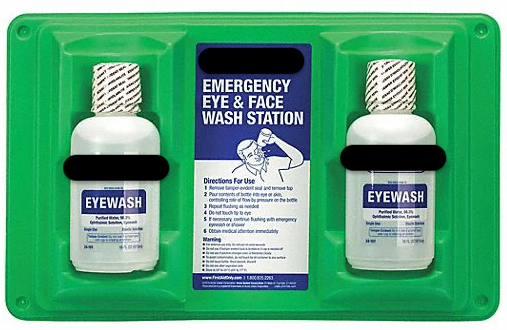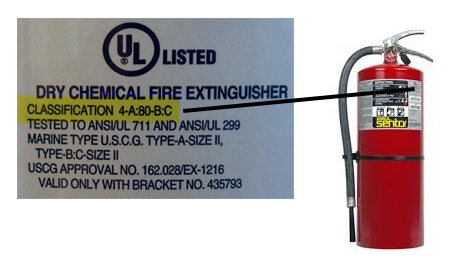|
October 15, 2024
This memorandum establishes guidance for inspections conducted in all animal slaughtering and processing establishments, North American Industry Classification System (NAICS) 3116, Animal Slaughtering and Processing.1 This memorandum updates and supersedes OSHA's previous inspection guidance specific to a subset of this NAICS, poultry slaughtering and processing establishments (NAICS 311615), OSHA Memorandum, October 28, 2015. This expansion into the broader Animal Slaughtering and Processing industry (NAICS 3116) is based on OSHA's determination that this industry has a high Bureau of Labor Statistics (BLS) days away, restricted, or transfer (DART) rate (i.e., above the 1.7 private industry national average). The goal of this initiative is to significantly reduce injuries and illnesses resulting from occupational hazards, through a combination of enforcement, compliance assistance, and outreach. Under this new memorandum, all programmed and unprogrammed inspections in NAICS 3116 shall cover the focus hazards associated with the list below, in accordance with the FOM:
These focus hazards shall be assessed in addition to other hazards that may be the subject of the inspection or based on information gathered by the compliance safety and health officer (CSHO) during the inspection. Additionally, the Department of Labor's Wage and Hour Division (WHD) protects workers from unlawful wage and hour practices and child labor violations. Therefore, OSHA offices should initiate referrals and exchange appropriate information relating to complaints, inspections, or investigations and related matters, to support the enforcement activities of the agencies. If OSHA discovers information relating a possible violation of the laws and regulations enforced by WHD, OSHA offices are to provide timely information to WHD by making a referral, per the Memorandum of Understanding between WHD and OSHA, dated May 4, 2023. All workers, regardless of their socioeconomic backgrounds or immigration status, have the right to a workplace that is free of known safety and health hazards and to report hazards to OSHA without fear of retaliation. OSHA shall also make referrals to whistleblower staff when indicated. Scope: This guidance applies to all Federal OSHA inspections, programmed and unprogrammed, conducted in: Read more ... Add new comment
On February 6, 2024, at 10:00 p.m., an employee, 26, was repairing leaking water on pump equipment without lockout/tagout. While the engine was on, the employee began to unscrew a high-pressure valve nipple. The pressure was not released from the valve, causing it to blow off and strike the employee in the head and chest.
On April 6, 2024, at 9:30 a.m., a 72-year-old employee of a farm supply wholesaler was working on an anhydrous ammonia tank trailer on the south side of the shop. The employee was located near the tank's valves and hose. While working on the tank, anhydrous ammonia was released. The employee died from asphyxiation from inhalation of the ammonia.
To be clear, I can't entirely agree with Alaska OSHRC's decision to dismiss the OSHA citation. But I am also tired of the blanketing workplaces with hi-vis gear that is NO LONGER "highly visible" or "reflective." These vests and other HI-VIS gear are used WAY beyond their intended life cycle, making safety a highly visible mockery. If we feel this PPE is necessary, it MUST be appropriately managed to maintain its effectiveness. See my article from earlier this year: When are High-Vis garments no longer considered High-Vis?
The AK OSHRC Decision This matter arises from an industrial accident that occurred on October 29, 2009, when an employee was severely injured when struck by a tanker truck driven by another worker. The injured employee had been assisting the driver in hitching a trailer up to the tanker and was pinned between the rear wheels of the tanker and the trailer. AK-OSHA issued a single, one-part citation alleging a violation of the occupational safety and health standard set forth at 29 C.F.R. § 1910.132(d)(1)(i). That standard requires employers to perform a workplace hazard assessment to determine whether hazards exist that necessitate the use of personal protective equipment [PPE] and, if so, to select and have employees use the appropriate PPE. The complaint asserts that the employer's workplace hazard assessment failed to identify a need for employees to wear reflective clothing or a safety vest while working in darkness or where vehicles are operating in close proximity. The employer filed a notice of contest and an answer to the complaint, followed by a motion to dismiss the complaint or, in the alternative, for summary adjudication. The employer's motion asserts that dismissal is proper because reflective clothing and vests do not constitute PPE within the meaning of 29 C.F.R. § 1910.132(d). It asserts that summary adjudication is appropriate because undisputed evidence establishes that the employer conducted a hazard assessment and required use of reflective clothing. Lastly, the employer contends that the violation, if there was one, should be characterized as de minimus. AK OSHA contends that dismissal of the citation is not warranted because a safety vest and reflective clothing are types of PPE, and that summary adjudication should be denied because the appropriate personnel did not perform a hazard assessment. AK OSHA adds that the violation is serious. After considering the evidence and the parties' arguments, the Occupational Safety and Health Review Board grants the employer's motion. Facts
Back in 2017, we discussed the hazards associated with dock levelers and working under the dock plate. These are indeed permit-required confined spaces, albeit ones that can be RECLASSIFIED using basic energy control methods (i.e., Lockout). In that 2017 article, I shared a video from a dock leveler manufacturer on how to isolate the dock plate BEFORE entering the area under it. On March 27, 2024, @ 11:00 a.m. an employee, 26, was performing maintenance on a Power Ramp Centra Air Dock Leveler. The employee reached into and underneath the dock plate/ramp while it was in the upright position. There is a maintenance prop arm that should be placed in the upright position to sustain the weight of the dock plate/ramp.
OSHA found an animal food producer exposed employees to the risks of explosions, fires and long-term respiratory illnesses from excessive amounts of airborne dust, among two dozen safety and health violations they identified. The findings follow an inspection after the agency received complaints of unsafe working conditions. OSHA inspectors found the company's
created serious combustible and airborne dust hazards. The agency also determined the business did not
OSHA also noted workers were exposed to
Inspectors cited the business for 19 serious and five other-than-serious safety and health violations. OSHA has assessed the company $161,332 in proposed penalties.
OSHA will not issue citations to an employer that properly uses a non-metal guard so long as the guard is constructed of a substantial and suitable material. OSHA standard, 29 CFR § 1910.219(m)(1)(i) states:
However, in an OSHA letter of interpretation, OSHA stated the following:
However, OSHA has stated that these squirt bottles CAN help flush a worker's eyes; they just cannot be the sole source. Here is what OSHA said: (emphasis by me)
Here is what OSHA says about fire extinguishers being "approved"... 1910.157(c)(2) Only APPROVED portable fire extinguishers shall be used to meet the requirements of this section. OSHA also provides us with the following regarding an "approved" item:
A Proposed Rule by the Occupational Safety and Health Administration on 08/30/2024 OSHA is proposing to issue a new standard, titled "Heat Injury and Illness Prevention in Outdoor and Indoor Work Settings". The standard would apply to all employers conducting outdoor and indoor work in all general industry, construction, maritime, and agriculture sectors where OSHA has jurisdiction, with some exceptions. It would be a programmatic standard that would require employers to create a plan to evaluate and control heat hazards in their workplace. It would more clearly set forth employer obligations and the measures necessary to effectively protect employees from hazardous heat. OSHA requests comments on all aspects of the proposed rule. Comments to this NPRM (including requests for a hearing) and other information must be submitted by December 30, 2024
One of the quandaries I find with the "Safe HW Area" approach is those areas that are actually set up as weld shops with all the bells and whistles we want in welding shops, such as ventilation to control exposures resulting from welding, cutting, and grinding. For example... 1910.252(a)(2)(viii) Ducts, requires that any ducts and/or conveyor systems that might carry sparks to distant combustibles shall be suitably protected or shut down within the 35' fire safe area so as to NOT spread the ignition sources outside of our fire safe area. But if we have a weld shop, these shops are typically equipped with ventilation to control the fumes/smoke/vapors from welding. The KEY here is that these ventilation systems are... |
Partner Organizations I am proud to announce that The Chlorine Institute and SAFTENG have extended our"Partners in Safety" agreement for another year (2024) CI Members, send me an e-mail to request your FREE SAFTENG membership
Member Associations
|
 In a 2024 LOI, OSHA reiterated its position that an Eyewash (EW) station must be capable of delivering 15 minutes of water flow. This means these EW bottles are NOT an "approved" EW station. Even the double barrel wall mount with two (2) squirt bottles does not meet the minimum flow rates.
In a 2024 LOI, OSHA reiterated its position that an Eyewash (EW) station must be capable of delivering 15 minutes of water flow. This means these EW bottles are NOT an "approved" EW station. Even the double barrel wall mount with two (2) squirt bottles does not meet the minimum flow rates. It never ceases to amaze me how businesses will cut corners in fundamental safety protections. Recently, I came across fire extinguishers that were not "approved" by a Nationally Recognized Testing Laboratory (NRTL). This was discovered during a 5-year REVAL PHA after the facility suffered a failure of one of its extinguishers that caused damage to some PSM/RMP piping. The investigation failed to identify the failure in that the facility was buying substandard FEs to save $ and then failed to inspect and maintain these substandard FEs per 1910.157 and their state fire code, which requires NFPA 10 compliance.
It never ceases to amaze me how businesses will cut corners in fundamental safety protections. Recently, I came across fire extinguishers that were not "approved" by a Nationally Recognized Testing Laboratory (NRTL). This was discovered during a 5-year REVAL PHA after the facility suffered a failure of one of its extinguishers that caused damage to some PSM/RMP piping. The investigation failed to identify the failure in that the facility was buying substandard FEs to save $ and then failed to inspect and maintain these substandard FEs per 1910.157 and their state fire code, which requires NFPA 10 compliance.












